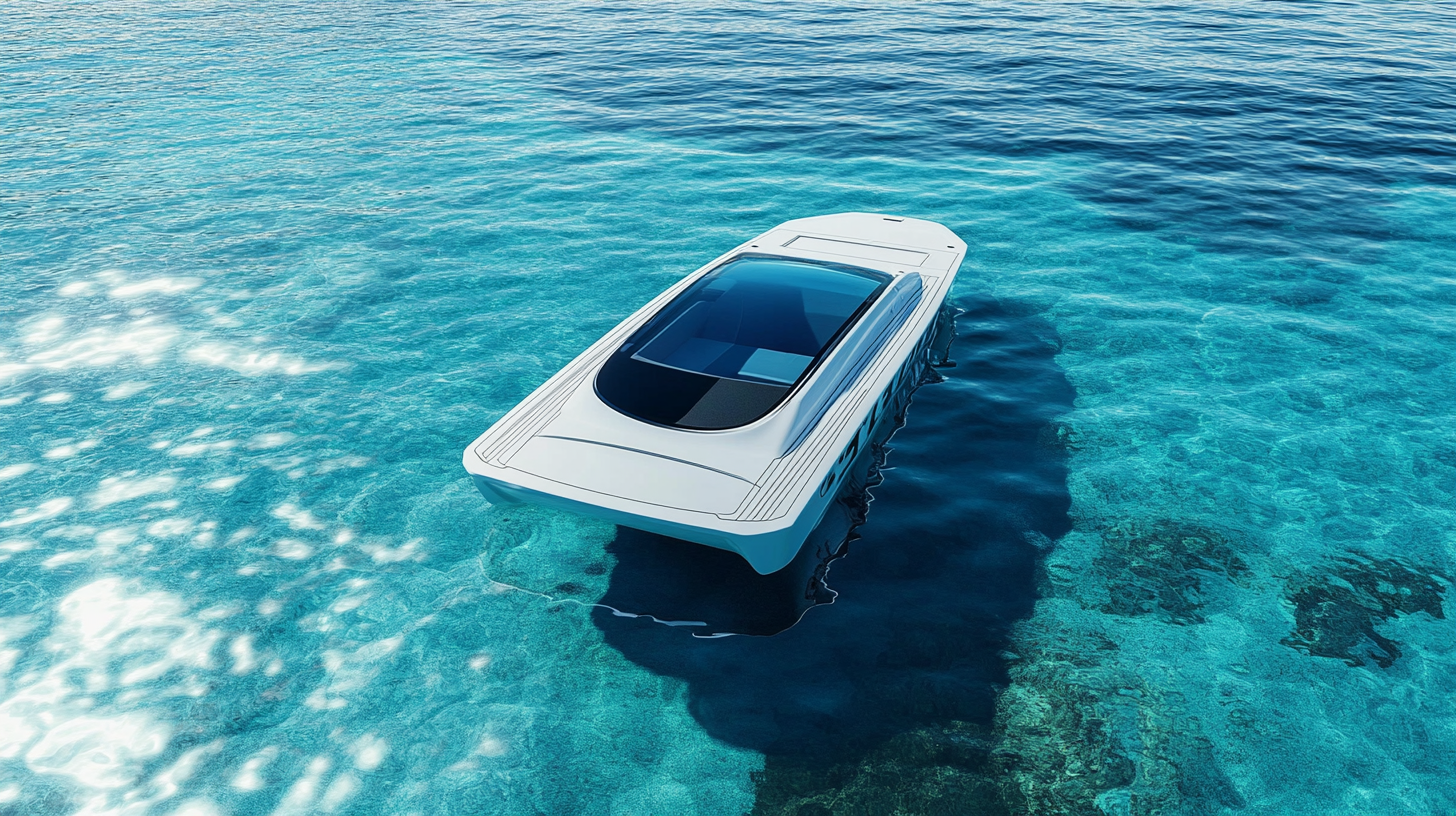Factory Tour
2025 Technology Trends Shaping the Future of Best 51.2v Lifepo4 Boat Batteries
As we look ahead to 2025, the landscape of marine energy storage is poised to undergo significant transformation, particularly with 51.2v Lifepo4 Boat Batteries. According to industry reports, the global marine battery market is projected to grow at a compound annual growth rate (CAGR) of over 20% from 2023 to 2028, driven by the increasing adoption of electric boats and the demand for sustainable energy solutions. The advancements in lithium iron phosphate (LiFePO4) technology promise improvements in energy density and longevity, making these batteries a preferred choice for recreational and commercial vessels alike. Additionally, regulatory developments favoring greener technologies further bolster the market's growth potential. In this blog, we will explore the 2025 technology trends that are shaping the future of 51.2v Lifepo4 Boat Batteries and their implications for the marine industry.

Emerging Technologies Transforming 51.2V Lifepo4 Boat Batteries by 2025
The advancement of technology is set to revolutionize the marine industry, particularly concerning 51.2V LiFePO4 boat batteries by 2025. As more boat enthusiasts lean towards sustainable energy solutions, the demand for high-performance batteries that offer both durability and efficiency is on the rise. According to the Global Battery Market report, the marine battery segment is expected to grow at a CAGR of 15% from 2023 to 2028, driven by innovations in battery chemistry and manufacturing processes. This growth highlights the vital role of emerging technologies in enhancing battery lifespan, charge cycles, and safety features.
One of the most promising trends is the integration of smart technology into LiFePO4 batteries, allowing for real-time monitoring and management of battery performance. This innovation can optimize energy consumption on boats, maximizing efficiency while minimizing environmental impact. Additionally, the use of advanced materials, such as graphene composites, is becoming more prevalent, promising lighter and more powerful batteries. As reported by McKinsey, these advancements could reduce battery weight by up to 30%, making them more suited for speed and performance.
Key Innovations in Battery Chemistry for Enhanced Performance
As we delve into the future of marine technology, the innovations in battery chemistry, specifically for 51.2V LiFePO4 boat batteries, are set to revolutionize boating experiences. These advancements focus on enhancing energy density and lifespan while also improving safety features. With a shift toward more sustainable energy solutions, manufacturers are exploring new electrolyte formulations and advanced electrode materials that promise to deliver higher performance and improved efficiency on the water.
Tip: When selecting a battery for your boat, consider not just the energy capacity, but also the charging times and cycle life. Investing in batteries with high cycle counts can significantly reduce the overall cost of ownership over time.
Additionally, smart battery management systems are becoming integral in new battery designs. These systems enable real-time monitoring of battery health, optimizing charge cycles, and enhancing user safety through integrated fail-safes. This not only allows boaters to extend the longevity of their power systems but also ensures consistent performance during demanding trips.
Tip: Regular software updates to your battery management system can enhance its capabilities, making your boating experience safer and more efficient. Always stay informed about the latest advancements and updates available for your battery model.
The Role of Smart Technology in Monitoring Battery Health
The integration of smart technology in monitoring battery health is revolutionizing the effectiveness and longevity of 51.2V LiFePO4 boat batteries. As the demand for renewable energy solutions continues to surge, reports indicate that the global battery management system market is projected to reach $32.7 billion by 2025, reflecting a compound annual growth rate of 18.6% from 2020. This growth is driven by the need for real-time data and predictive analytics to enhance battery performance, especially in marine applications where reliability is crucial.
Modern monitoring systems utilize IoT technology to provide detailed insights into battery health, enabling users to track parameters such as temperature, voltage, and state of charge. According to a study by MarketsandMarkets, 50% of battery failures can be mitigated through regular monitoring and predictive maintenance. By implementing smart technology, boat owners can extend the lifespan of their batteries, ultimately leading to reduced costs and improved safety on the water.
Tips for maintaining optimal battery health include regularly checking the battery management system for alerts, ensuring proper ventilation to maintain temperature, and avoiding deep discharges. Regular software updates can also enhance the functionality of monitoring systems, providing users with the latest advancements in battery technology and analytics. Embracing these practices will ensure that the future of boating is powered by efficient and reliable energy solutions.
2025 Technology Trends Shaping the Future of Best 51.2v Lifepo4 Boat Batteries - The Role of Smart Technology in Monitoring Battery Health
| Feature | Description | Impact on Battery Health | Year Implemented |
|---|---|---|---|
| Real-time Monitoring | Continuous assessment of battery status using sensors. | Enhances safety and performance by preventing overcharging. | 2023 |
| Data Analytics | Using algorithms to analyze battery life patterns. | Optimizes battery usage and extends lifespan. | 2024 |
| Mobile App Integration | Control and monitor battery settings via smartphone. | Improves user convenience and interaction with battery systems. | 2024 |
| Predictive Maintenance | Forecasting potential battery issues before they occur. | Reduces downtime and maintenance costs. | 2025 |
| Solar Integration | Combining solar power technology with battery management systems. | Maximizes energy efficiency and sustainability. | 2025 |
Sustainability Trends in Marine Battery Production and Usage
 The marine industry is witnessing a significant shift towards sustainability in the production and usage of batteries, particularly in the case of 51.2V LiFePO4 boat batteries. As regulations tighten and eco-consciousness rises among boaters, manufacturers are prioritizing environmentally friendly practices. Innovations in battery recycling and materials sourcing are becoming the cornerstone of sustainable marine battery production. For instance, the use of recyclable materials and the adoption of cleaner manufacturing processes not only reduce the environmental footprint but also enhance the efficiency and longevity of the batteries.
The marine industry is witnessing a significant shift towards sustainability in the production and usage of batteries, particularly in the case of 51.2V LiFePO4 boat batteries. As regulations tighten and eco-consciousness rises among boaters, manufacturers are prioritizing environmentally friendly practices. Innovations in battery recycling and materials sourcing are becoming the cornerstone of sustainable marine battery production. For instance, the use of recyclable materials and the adoption of cleaner manufacturing processes not only reduce the environmental footprint but also enhance the efficiency and longevity of the batteries.
Moreover, sustainable usage practices are gaining traction among boat operators. Emphasizing energy efficiency, many marine enthusiasts are increasingly leaning towards solar charging solutions and hybrid systems that integrate alternative energy sources. The incoming generation of boat batteries is designed not just for performance, but also with a focus on minimal ecological impact, ensuring that leisure activities on the water can be enjoyed without compromising environmental integrity. As these trends continue to evolve, they set a promising precedent for a greener future in the boating industry.
Future Challenges and Solutions for the Lifepo4 Battery Market
As the demand for energy-efficient solutions continues to surge, the LiFePO4 battery market faces both significant challenges and promising opportunities. According to the International Energy Agency (IEA), the global market for battery storage is projected to grow by 25% annually over the next five years, driven by the push for clean energy and advancements in technology. However, the LiFePO4 sector must navigate hurdles such as supply chain constraints, fluctuating raw material prices, and competition from alternative battery technologies.

One solution to these challenges lies in enhancing recycling capabilities for LiFePO4 batteries. The Battery Recycling Market Report indicates that the recycling rate for lithium-ion batteries is expected to reach 67% by 2030, which can alleviate some supply pressures. Additionally, investing in research and development can improve battery efficiency and lifespan, making them more attractive for marine applications.
Tip: Always consider choosing batteries with a long cycle life for marine use. LiFePO4 batteries typically offer over 2000 cycles, translating to a lower long-term cost and a reduced environmental impact.
As manufacturers adapt to meet evolving market demands, end-users must remain informed about these trends and innovations. Continuous engagement with industry reports and technological developments can empower consumers to make sustainable energy choices that benefit both their vessels and the planet.
Tip: Prioritize energy management systems that integrate smart charging for your boat’s battery. This can optimize the battery lifespan and improve overall efficiency on the water.







